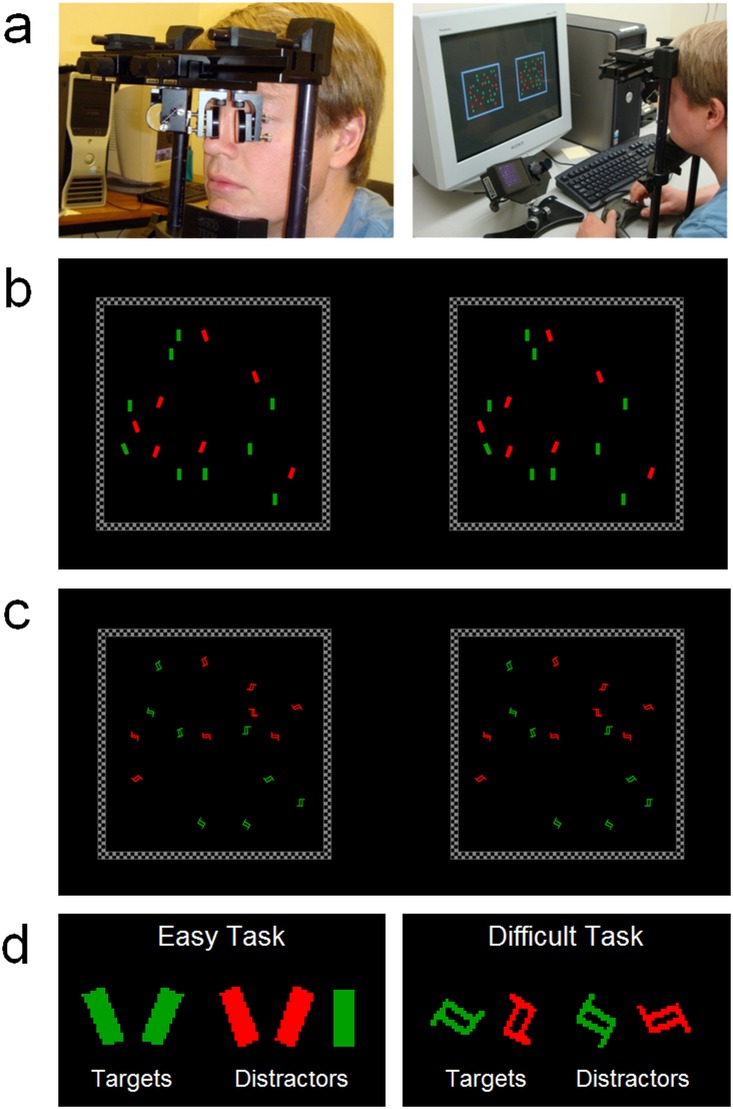Figure 1.
(A) Experiment setup of stereoscope and eye tracker for monocular eye tracking during the presentation of virtually three-dimensional search images; (B) Stimuli for the easy task—determine the tilt direction of the only tilted green bar; (C) Stimuli for the difficult task—determine the color of the only counterclockwise pointing item. Left and right stimulus panels are swapped to allow cross-eyed viewing of the three-dimensional stimuli. Readers may fuse the two panels by focusing their gaze on a point in front of the image in order to perceive the 3D stimulus as it was presented in the experiment. (D) Target and distractor items in the easy (left) and difficult (right) tasks. In Experiment 1, the target was a green bar that was tilted 20° from vertical either to the left or to the right, whereas the distractors were vertical green bars and red bars tilted 20° from vertical to the left or right (Figure 1b and 1d). In Experiment 2, the target was a “Z”-like figure of either red or green color, and the shape of the distractors was a mirror image of the target; all items were randomly oriented (see Figure 1c and 1d).

